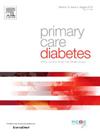The promise of tirzepatide: A narrative review of metabolic benefits
IF 2.6
4区 医学
Q3 ENDOCRINOLOGY & METABOLISM
引用次数: 0
Abstract
Obesity and type 2 diabetes mellites (T2DM) are intertwined epidemics that continue to pose significant challenges to global public health. We aim to review the available evidence on the metabolic effects of tirzepatide, focusing on weight loss and maintenance of lost weight, body composition alterations, appetite regulation, glycemic control, and lipid profile modulation. Tirzepatide administration for 72 weeks elicited significant weight reduction ranging from 5 % to 20.9 % across different trials in a dose-dependent manner. Furthermore, limited evidence showed that lost body weight may be primarily due to fat mass reduction. Tirzepatide also significantly decreased food intake, reduced overall appetite scores and increased fasting visual analog scale scores for satiety and fullness across different clinical trials. Moreover, tirzepatide exhibited favorable effects on glycemic control, with notable reductions in HbA1c levels ranging from 20.4 mmol/mol with the 5 mg dose to 28.2 mmol/mol with the 15 mg dose, following treatment durations lasting 40–52 weeks. Additionally, tirzepatide exerts a beneficial impact on lipid profile parameters, including reductions in total cholesterol, low-density lipoprotein cholesterol, and triglyceride levels, while increasing high-density lipoprotein cholesterol concentrations. Despite its efficacy, tirzepatide is associated with gastrointestinal adverse effects, which requires dose escalation strategies to enhance tolerability. Mild to moderate adverse events are commonly reported at higher doses, with discontinuation rates ranging from 4 % to 10 % across different dosages. In conclusion, tirzepatide has shown multifaceted metabolic effects, along with manageable adverse profiles, which makes it a promising therapeutic agent for addressing both obesity and T2DM. However, further long-term randomized controlled trials are warranted to reveal long-term efficacy and safety outcomes, particularly in diverse patient populations.
替西肽的前景:代谢益处的叙述性回顾
肥胖和2型糖尿病(T2DM)是相互交织的流行病,继续对全球公共卫生构成重大挑战。我们的目的是回顾有关替西肽代谢作用的现有证据,重点是减肥和维持减肥,身体成分改变,食欲调节,血糖控制和血脂调节。在不同的试验中,替西帕肽给药72周可显著减轻体重,减轻幅度为5 %至20.9 %,呈剂量依赖性。此外,有限的证据表明,体重减轻可能主要是由于脂肪量减少。在不同的临床试验中,替西帕肽还显著减少食物摄入量,降低总体食欲评分,并增加空腹视觉模拟量表的饱腹感和饱腹感评分。此外,替西帕肽在血糖控制方面表现出良好的效果,在治疗持续40-52周后,HbA1c水平显著降低,从5 mg剂量的20.4 mmol/mol到15 mg剂量的28.2 mmol/mol。此外,替西帕肽对血脂参数有有益影响,包括降低总胆固醇、低密度脂蛋白胆固醇和甘油三酯水平,同时增加高密度脂蛋白胆固醇浓度。尽管疗效良好,但替西帕肽与胃肠道不良反应有关,这需要剂量递增策略来增强耐受性。轻度至中度不良事件通常在较高剂量下报告,不同剂量的停药率从4 %到10 %不等。总之,替西肽显示出多方面的代谢作用,以及可控的不良反应,这使其成为治疗肥胖和2型糖尿病的有希望的药物。然而,需要进一步的长期随机对照试验来揭示长期疗效和安全性结果,特别是在不同的患者群体中。
本文章由计算机程序翻译,如有差异,请以英文原文为准。
求助全文
约1分钟内获得全文
求助全文
来源期刊

Primary Care Diabetes
ENDOCRINOLOGY & METABOLISM-PRIMARY HEALTH CARE
CiteScore
5.00
自引率
3.40%
发文量
134
审稿时长
47 days
期刊介绍:
The journal publishes original research articles and high quality reviews in the fields of clinical care, diabetes education, nutrition, health services, psychosocial research and epidemiology and other areas as far as is relevant for diabetology in a primary-care setting. The purpose of the journal is to encourage interdisciplinary research and discussion between all those who are involved in primary diabetes care on an international level. The Journal also publishes news and articles concerning the policies and activities of Primary Care Diabetes Europe and reflects the society''s aim of improving the care for people with diabetes mellitus within the primary-care setting.
 求助内容:
求助内容: 应助结果提醒方式:
应助结果提醒方式:


